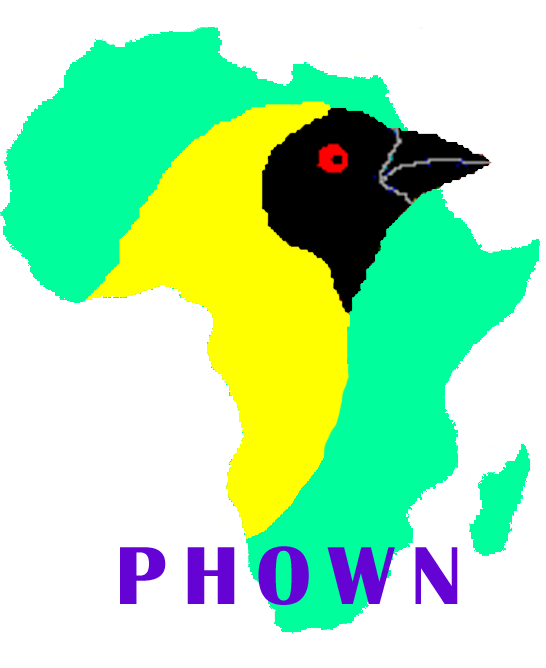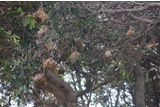Weaver news
| Ogochukwu ES, Okechukwu AD, Nnaegbo OG. 2012. Construction and testing of ultrasonic bird repeller. Journal of Natural Sciences Research 2(9): 8-17. Abstract. The threat posed by birds to economic crops in the farms or at storage facilities requires the deployment of an effective bird deterrent in such locations. Many attempts have been made to develop successful bird deterrent systems with only a few achieving desired results. The ultrasonic frequency range 15-25 kHz is known to be disturbing to birds and a device operating at that range was developed. The output of the integral oscillator was fed to 4 piezo transducers, placed 90o to each other to produce a dispersion of overlapping fans of sound for full 360o coverage. The power of the first device was 7.98W and the intensity of the sound pressure at 1m was calculated to be 6.35x10-1W/m2 at 118dB. A second device was constructed which had a power of 23.98W and intensity of the emitted sound at 1m, 1.91W/m2 at 123dB. The devices were tested and the results obtained showed that the ultrasonic beam from the piezo speakers was able to drive birds away from designated areas. Further tests conducted with the unit showed a wider reach of the waves on a dull day than on a sunny day. About 5-6 of the second device is expected to cover one hectare of field. The device is solar powered, eliminating the cost of fuel, the inconvenience of regular attention and its protection from environmental perturbation. It is environmentally friendly.
The paper provides figures for the electronics. The ultrasonic waves were generated with automatically varied frequencies between 15kHz and 25kHz, and amplified and broadcast from a locally made solar powered electronic device. The 7.98W device produced an ultrasound of 118dB, which covers an area of 45.02 m2, while the 23.98W with an ultrasound of 123dB covers an area of 232.26m2 when at 0.78m elevation. At an elevation of 1.86m, their average area coverage will be 175.83m2 and 429.53m2 respectively. The ultrasonic waves drove weaver birds and black birds, but not queleas, away from the test locations. The waves travelled farther with increasing power of the gadget and for wet days than for dry days. Literature as featured in Weaver Watch news items |











